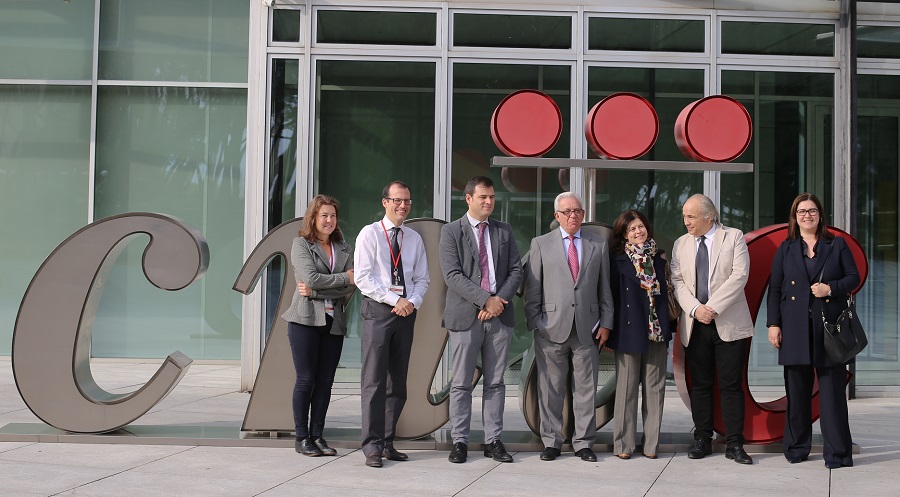The Madri+d Foundation visits the CNIC
The director of the Madri+d Knowledge Foundation, Jesus Sánchez Martos, visits the Carlos III National Center for Cardiovascular Research (CNIC) to learn first-hand about its main lines of research and explore new ways of collaboration
Guided by Alberto Sanz, managing director; Borja Ibáñez, director of Clinical Research; Gonzalo Pizarro, researcher; and Iciar Areilza, general secretary of the ProCNIC Foundation; the director of the Foundation was given a tour of the Center, which started with a presentation of the various projects they develop, among which are:
The PESA-CNIC-Santander project (Progression of Early Subclinical Atherosclerosis), a prospective cohort study in which more than 4,000 individuals of intermediate age are controlled on a long-term basis thanks to the use of the most innovative imaging techniques and whose main purpose is to characterize the prevalence and rate of progression of latent atherosclerotic lesions (called "subclinical" because they do not have any symptoms) and study their association with molecular and environmental factors, including eating habits, physical activity, biorhythms, psychosocial characteristics and exposure to environmental contaminants. At early ages, atherosclerotic plaques (accumulation of fats in the walls of the arteries within the process called atherosclerosis) already begin to develop, although there are no symptoms. This research will help to improve the prevention of atherothrombotic disease and its most important complications (myocardial infarction and cerebral infarction-stroke-), identifying the risk factors and lifestyle habits that influence its progression and detecting it before the symptoms appear.
The medication, developed in collaboration with the pharmaceutical company Ferrer, is marketed under the name Trinomia and is authorized in 15 countries of the European Union, including Spain
Furthermore, the development of the CV polypill for secondary prevention is a medication that combines three drugs: an antiplatelet drug to prevent the formation of thrombi (acetylsalicylic acid), a statin to control cholesterol levels and to stabilize the atheroma plaque (atorvastatin) and an ACE inhibitor, an antihypertensive that prevents the remodeling of the heart that occurs after a heart attack (ramipril). The medication, developed in collaboration with the pharmaceutical company Ferrer, is marketed under the name Trinomia and is authorized in 15 countries of the European Union, including Spain. The data show that it is effective in improving adherence to treatment: which means, it is easier for individuals to take three compounds in a single capsule than to take them separately. The second advantage is cost: although the cost varies depending on the country, Trinomia is a cost-efficient intervention because the increase in adherence means a reduction in the incidence of cardiovascular events, thus reducing the associated costs. The third is that it aims to become a vehicle for secondary prevention in developing countries, where currently 80% of deaths occur as a result of cardiovascular disease, and the access to these treatments is virtually non-existent.











